Hiking the West Coast Trail
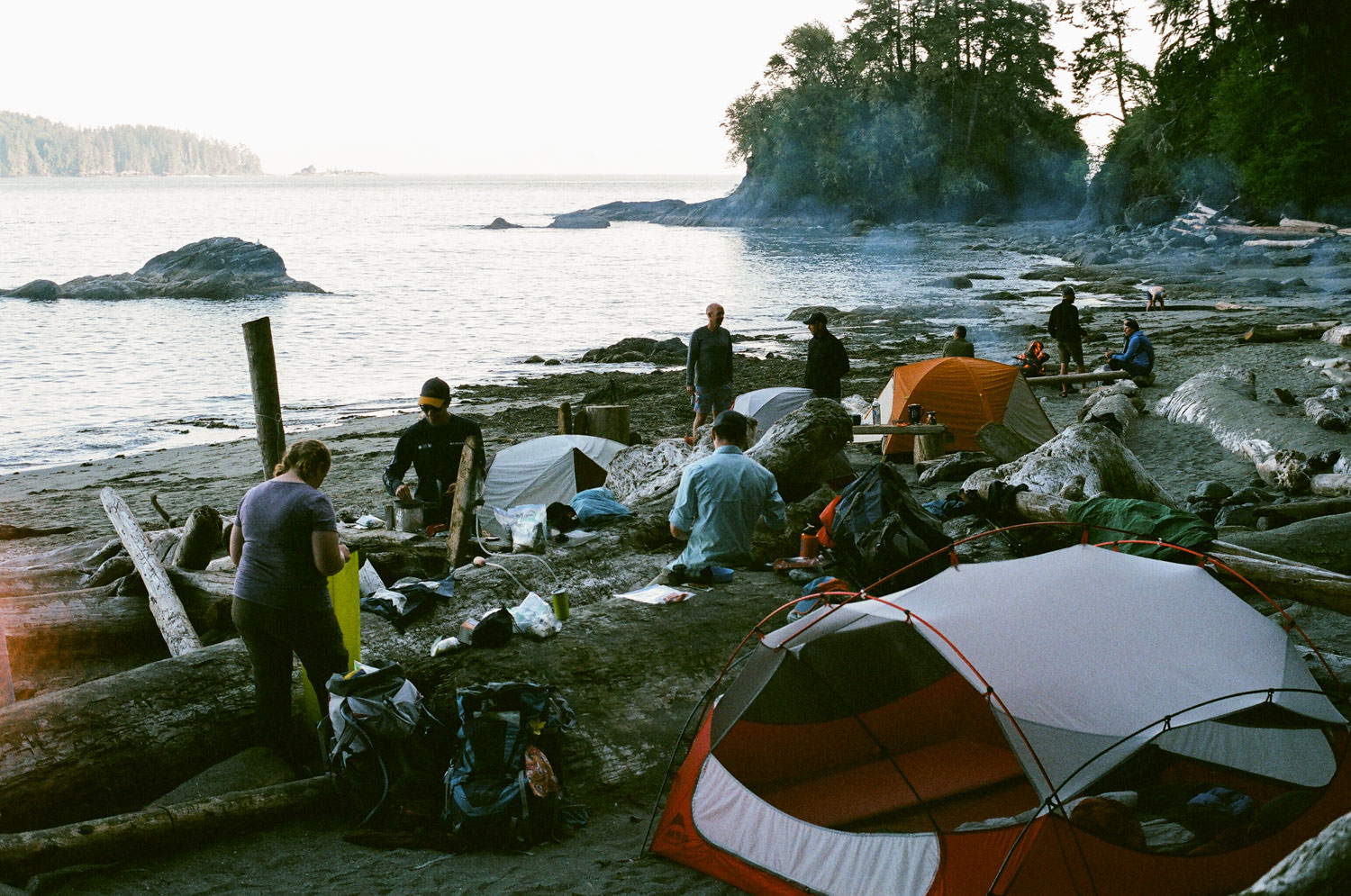
The West Coast Trail
Vancouver Island, British Columbia, Canada
Words and photos by Katee Pederson
For a lot of Canadian backpackers, obtaining a permit for Vancouver Island’s West Coast Trail is like finding the golden ticket in a Wonka Bar. With a limited number of hikers allowed on the trail each day of its already shortened season, it’s a race to obtain your desired start date and direction when booking opens in early January.
Through dense rainforest and along rugged shorelines, navigating the WCT is a rite of passage for hikers across the country. The park maps out the trail at 75km, but anyone who has completed it will tell you it’s closer to 100. Some of those kilometres are easier than others, but all of them are made more difficult by the rain that often refuses to relent when you’ve had enough.
Through dense rainforest and along rugged shorelines, navigating the WCT is a rite of passage for hikers across the country.

The entire West Coast Trail is on the traditional territory of the Huu-ay-aht, Ditidaht, and Pacheedaht First Nations, who have inhabited the area for more than 4,000 years. Native trails existed in the area prior to European settlement, but the trail as we know it now was originally called the Dominion Lifesaving Trail. It was built as a survival path to give shipwrecked mariners an opportunity to find help after being washed ashore and was later used for logging.
Today the WCT is protected and monitored by the Pacific Rim National Park Reserve, and as the trail passes through several First Nations reserves, multiple communities work together to keep both the land and the people who use it safe. The remnants of the area’s varied history can be spotted along the way in the form of donkey engines, telegraph lines, and a whole lot of ship buoys.
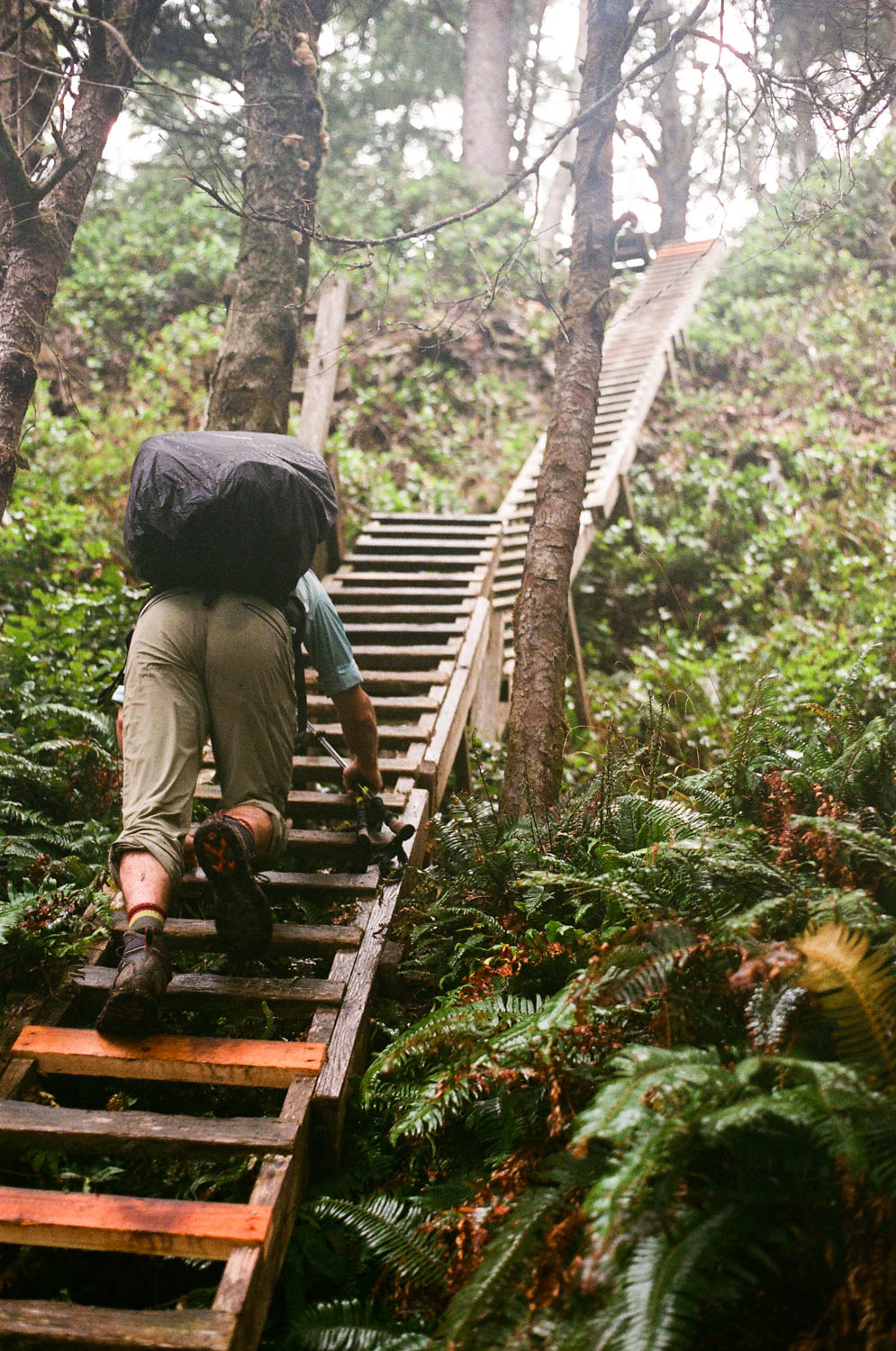 Not unlike the waters that surround it, the West Coast Trail has a brutal reputation. Between the hills, ladders, roots, mud, rocks, bridges, cable cars, river crossings, fallen trees, and dilapidated boardwalks, your permit brings with it plenty of opportunity to leave you on your butt.
Not unlike the waters that surround it, the West Coast Trail has a brutal reputation. Between the hills, ladders, roots, mud, rocks, bridges, cable cars, river crossings, fallen trees, and dilapidated boardwalks, your permit brings with it plenty of opportunity to leave you on your butt.
Not unlike the waters that surround it, the West Coast Trail has a brutal reputation.
One out of every 100 hikers are evacuated from the trail each season, often due to an injury associated with a fall. It doesn’t take long to learn that it’s not a question of if you’ll fall, it’s how hard.
In the same light, it’s not a question of if it will rain, it’s if it will stop. The heavy rains add fuel to the fire of an already difficult terrain, making the mud muddier and every surface more slippery.
Without cell service, hikers must rely on the generosity of others if they find themselves in an emergency.
There are three cabins, two lighthouses, and two ferry crossings on the trail, each with a keeper or guardian who has radio contact with emergency services. If you come across someone in need of help, you pass the message along to one of these people who will aid in obtaining care. That being said, you could be stuck in a spot for hours, possibly days even, before an evacuation team can arrive.
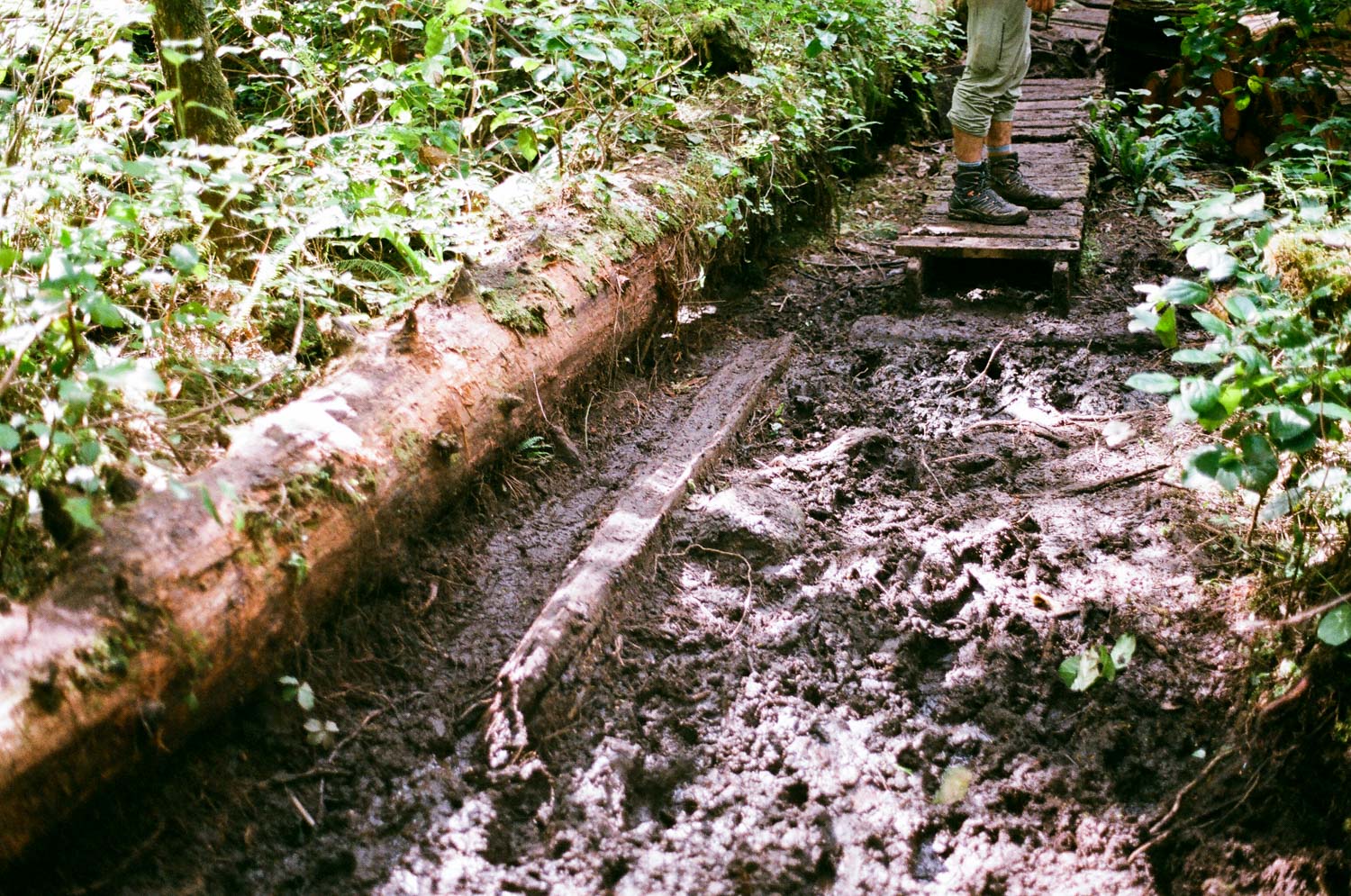
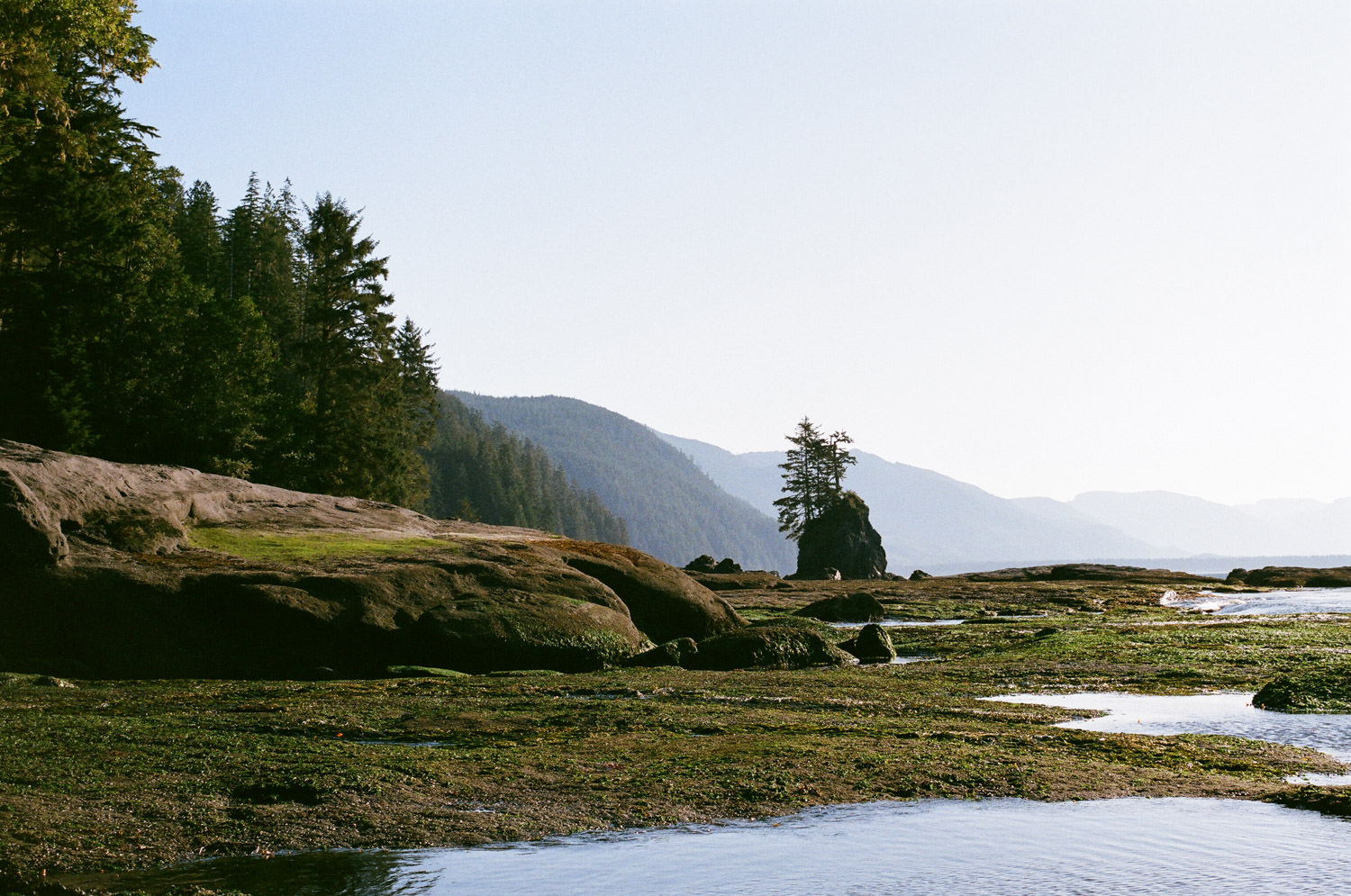
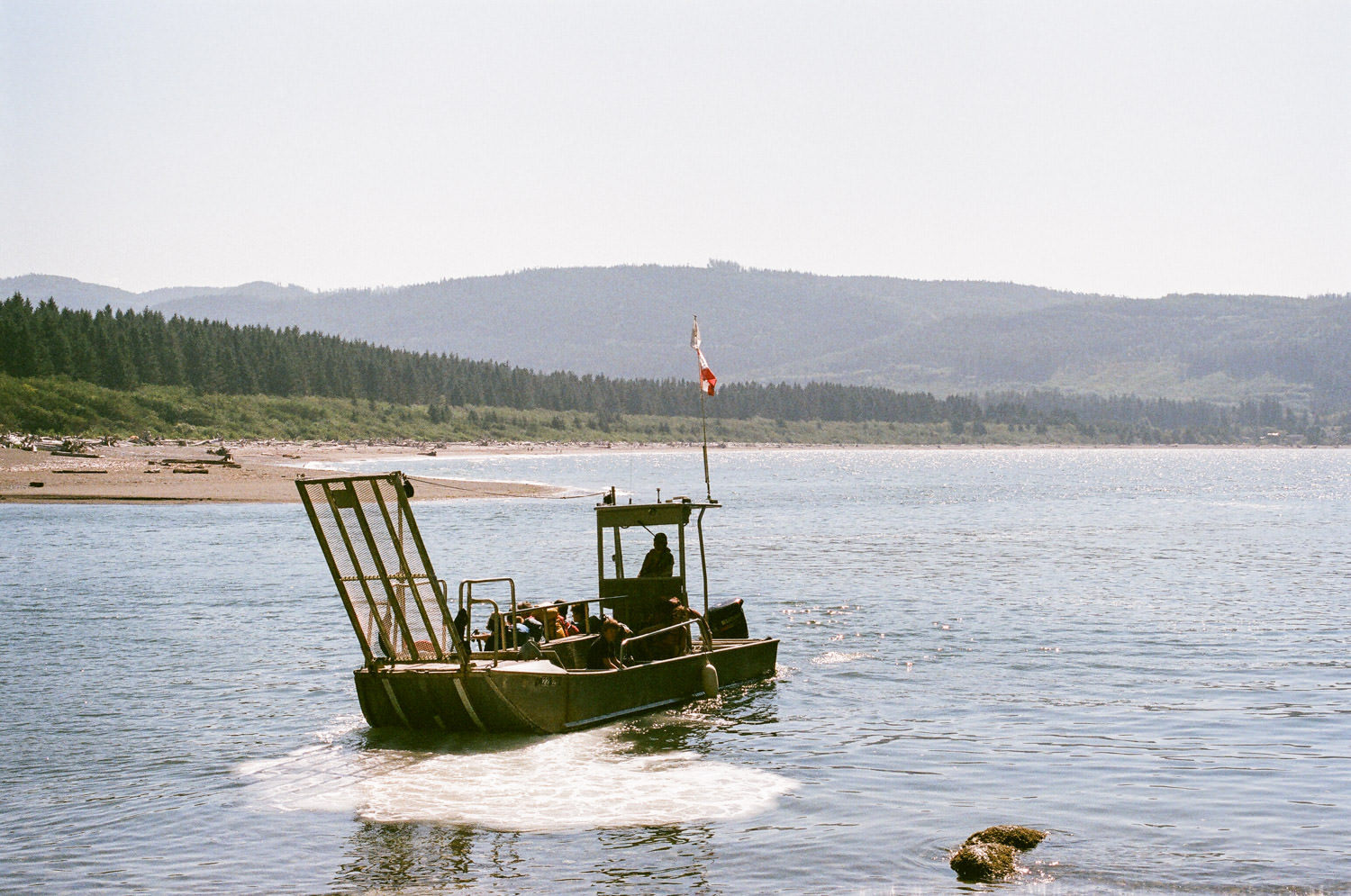
There is one opportunity to purchase food or additional supplies on the WCT. Not far from the halfway point, at Nitinat Narrows, is the Crab Shack. Here you can feast on some of the best crab in the world, ice cold beer, and melt in your mouth banana bread. You can also stock up on toilet paper if you misjudged your usage. The shack is run by the local Ditidaht people and many will tell you that it’s the best $40 they’ve ever spent on a meal.
As for the rest of your food, you’ve got to carry in everything you’ll need and pack out all of your garbage as there are no caches along the way.
There are specific camping areas throughout the trail, however, which are complete with composting toilets, bear bins, fresh water rivers, and lots of drift wood to build beach fires. The best part about these campsites is more than the opportunity to rest your feet—it’s the people you get to know while drying your socks around the fire. After a long day of trekking there’s nothing better than enjoying a warm drink and a healthy dose of laughter with new friends.
The best part about these campsites is more than the opportunity to rest your feet—it’s the people you get to know while drying your socks around the fire.

Most groups complete the trail in 5-7 days but mine chose to make the most of our time on the coast and spent eight days on the trail. In hindsight I think seven would have been a better decision, but as I was a late addition I didn’t have much say in when we went, where we started, or how long we planned to stay out.
I agreed to hike the West Coast Trail less than four weeks before our start date. An acquaintance of mine had posted on Facebook that he and a co-worker were looking for more hikers to join their expedition. While I wasn’t sure if my fitness was up to par, I couldn’t turn down the opportunity and caught myself quickly committing.
With me on board we still needed a fourth, so I invited a new friend (turned boyfriend) to join us. We had just met the week before but he seemed like the type of person who would be up for an adventure with strangers. Thankfully, I wasn’t wrong. Less than a month later the four of us were crammed in a Jetta making the 14-hour drive from the Canadian Prairies to the West Coast.
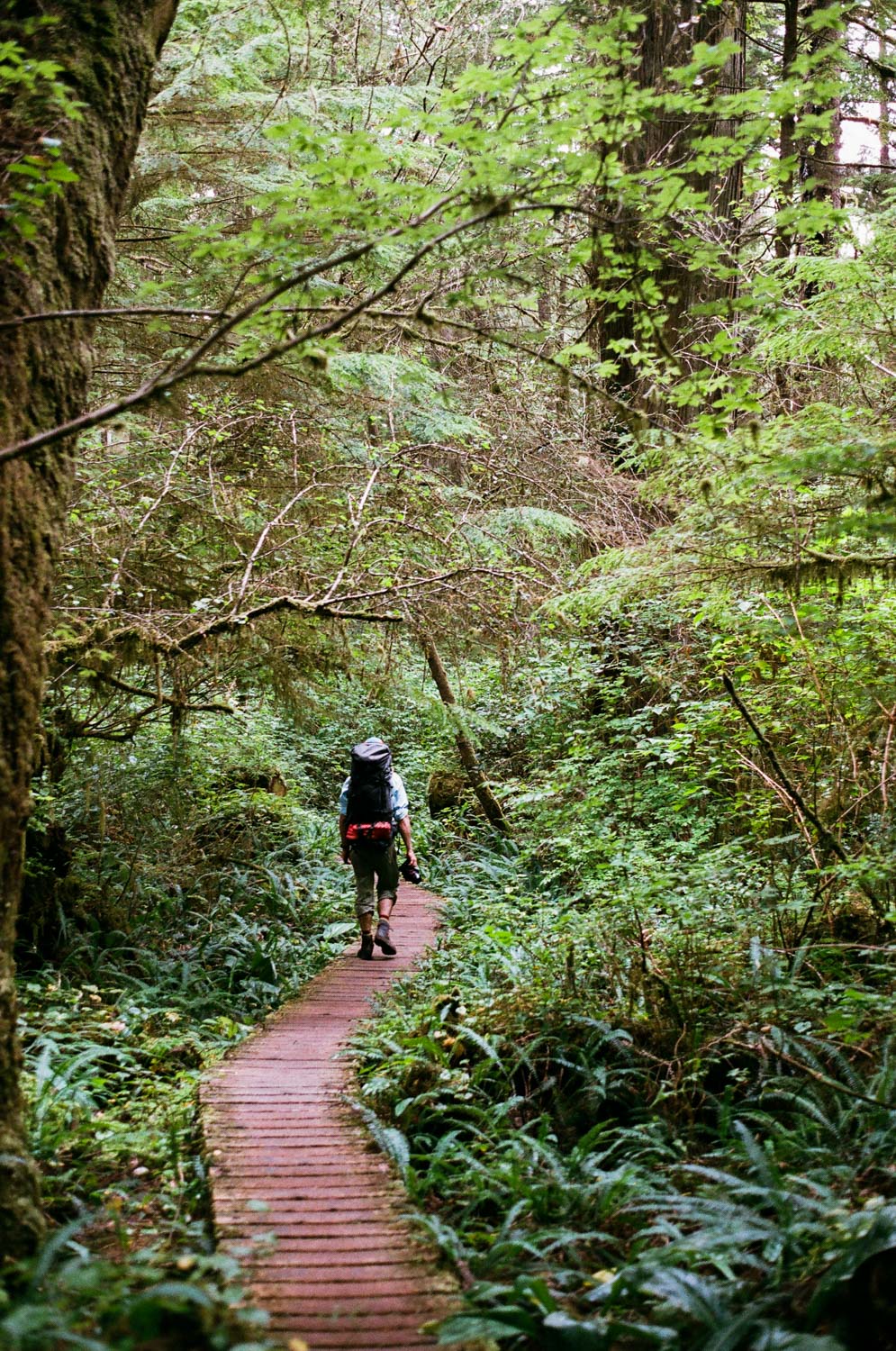
I started the trail thinking it would be the most difficult thing I’ve ever done. While I had completed my first 3 overnight hikes in the previous year, I still didn’t consider myself a backpacker. The hype surrounding this trail intimidated me and had me questioning how I would hold up.
I was prepared to suffer for much of the 8 days on the WCT…
“The best part of hiking the West Coast Trail is finishing hiking the West Coast Trail.” … “West Coast Trail, more like WET Coast Trail.” … “I thought it was an exaggeration when we were told we would only travel 1 km per hour during certain parts, but it wasn’t.” … “I live in the Rockies, I hike all the time, but this was so much more difficult.”
Reading and hearing words like this in blogs and podcasts reminded me that this trail was not one to take lightly.
I was prepared to suffer for much of the 8 days on the WCT but this funny thing happened instead–I didn’t.
I walked off that trail not wanting it to end, but instead asking myself what was next.
Don’t get me wrong; it was a lot of hard work. There were times when I was tired, times when I couldn’t decide if my feet or shoulders hurt more, times when all I wanted was to take off my boots and backpack and never put them back on. There were moments when I just had to take it one step at a time.
But more importantly there were times when I couldn’t believe what I was seeing… when all I could do was stand in awe of nature’s beauty, when one little film photograph couldn’t come close to capturing what I was witnessing, when the camaraderie of our mishmash team had me smiling from ear to ear, and when the simple act of moving and breathing and focusing on only my immediate needs was the most blissful thing I’d ever experienced.
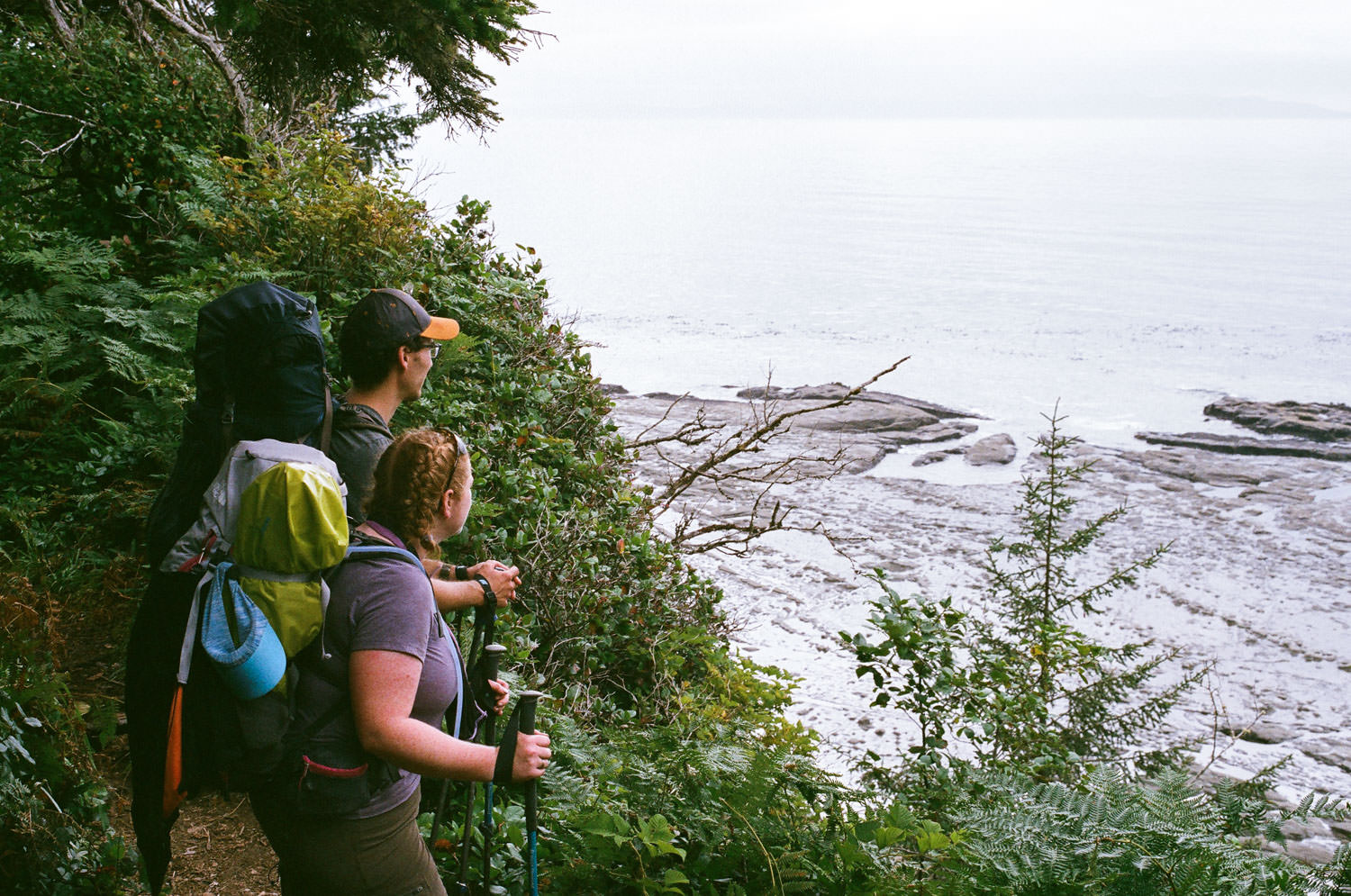
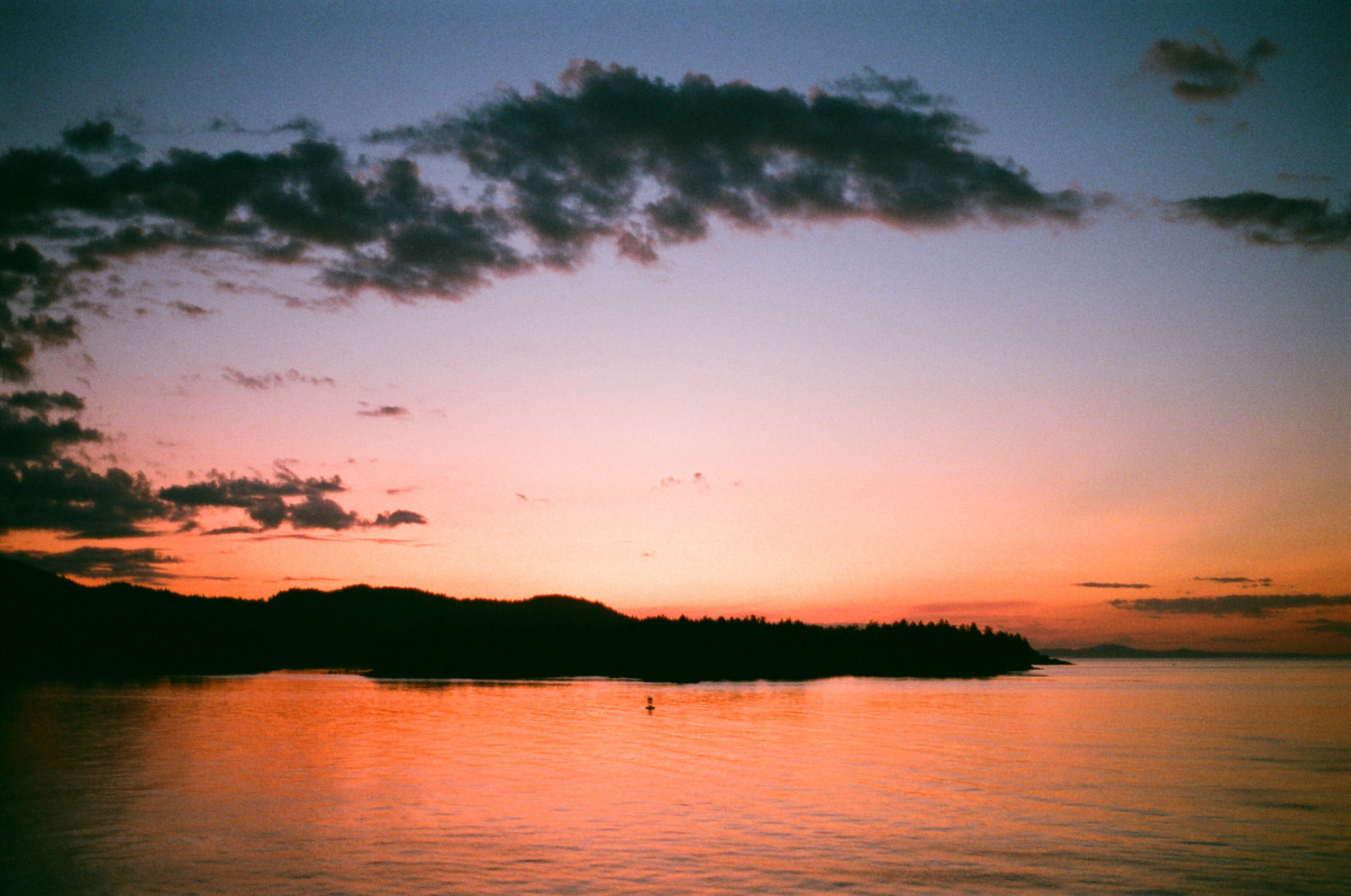
As a photographer, it’s easy to lose your sense of presence when visiting a new place. You get lost in getting the shot instead of appreciating what you are experiencing.
That is why I chose to bring only a film camera and 2 rolls of film with me on this trail. It forced me to slow down and completely take in my surroundings before clicking the shutter. Sometimes it forced me to not capture an image at all. It means that some of my memories are just my memories, and makes every photograph I took mean so much more.
I saw whales, dolphins, sea lions, starfish, bald eagles, and river otters while on the trail. I saw big trees, big rocks, big waves, big waterfalls, and big piles of mud. I saw sunrises and sunsets and everything in between. I saw old friendships grow and new ones blossom.
Most significantly, however, I saw myself. I saw myself as strong and capable and for the first time in a while, in the place I was meant to be doing exactly what I was made to do.
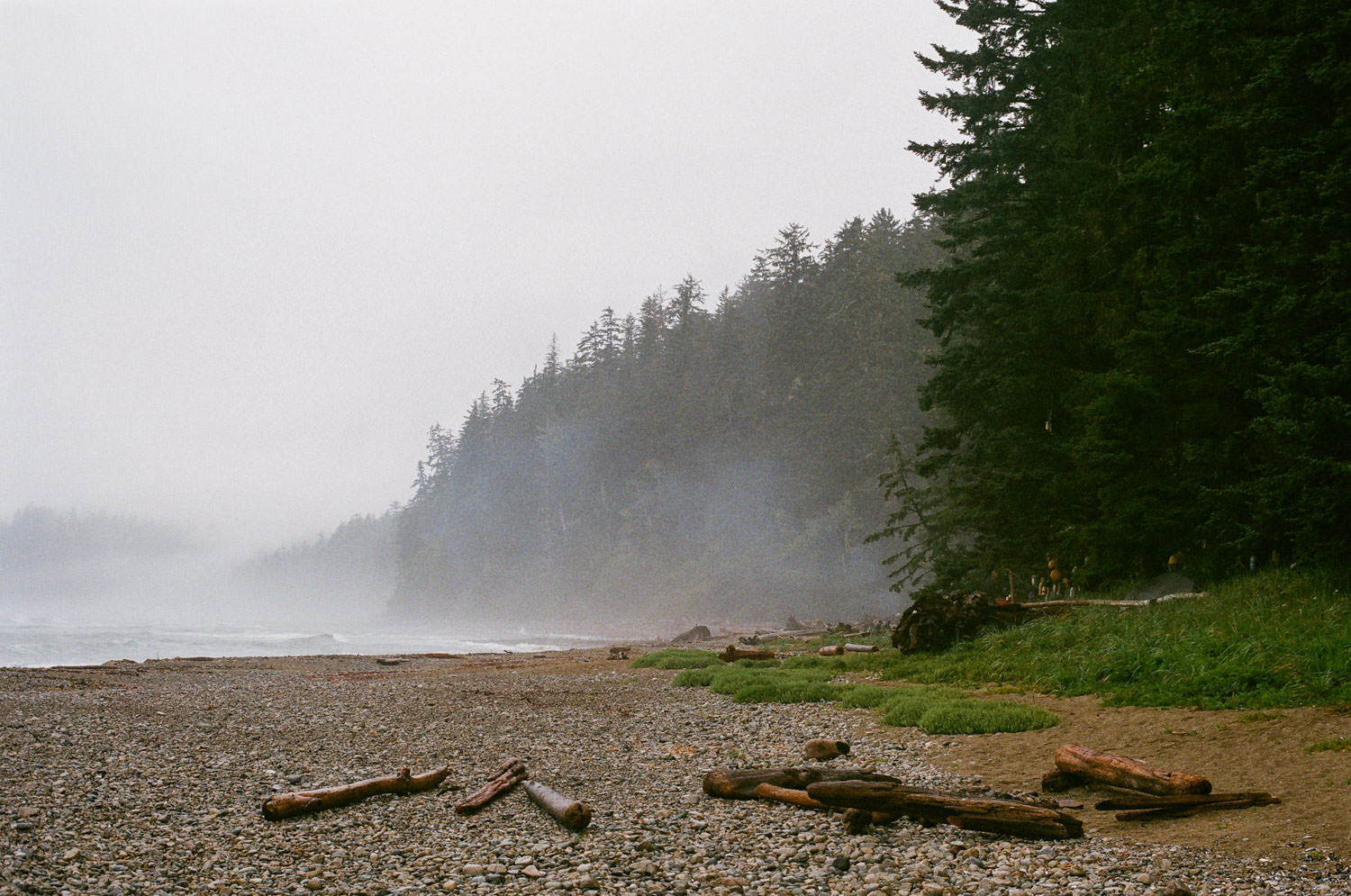
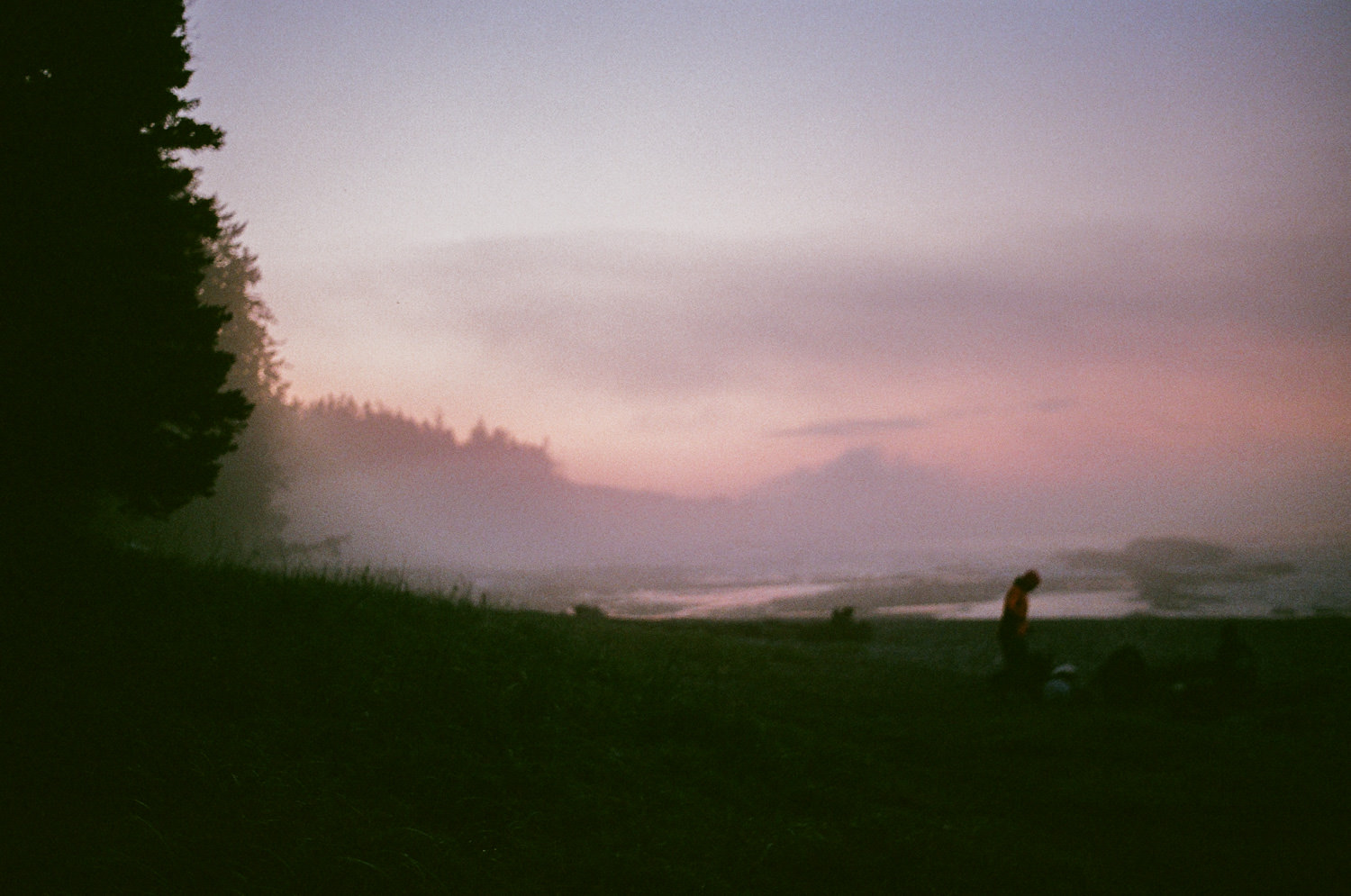
Katee Pederson is a brand and wedding photographer based out of Saskatoon, SK, Canada. She is an avid canoeist, hiker, and storyteller, documenting her experiences at kateepederson.com and on Instagram @kateepederson.




Be the first to comment